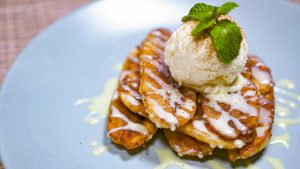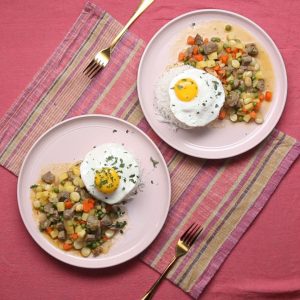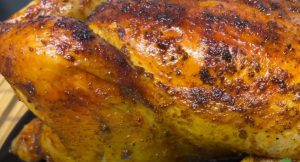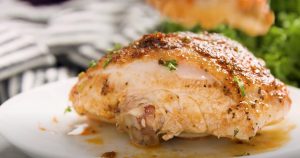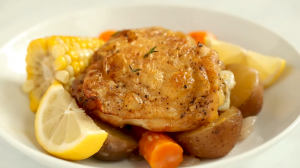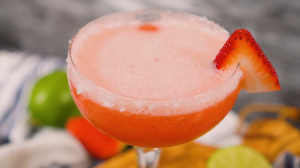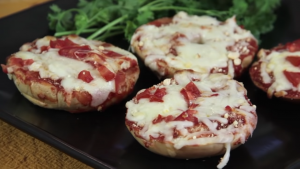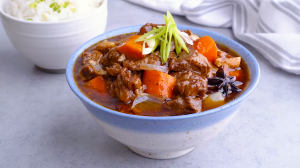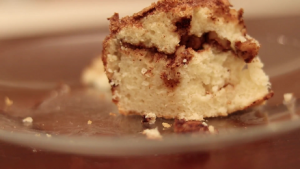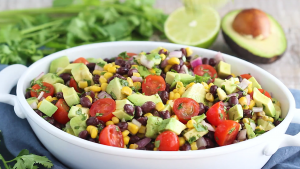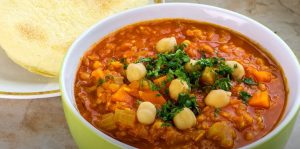Peruvian Alfajores with Manjar Blanco is a traditional delicacy from Peru, where two shortbread cookies are sandwiched together with a dulce de leche-style filling. The cookies are light and crumbly with a subtle sweetness that pairs perfectly with the rich, creamy filling. This recipe is straightforward to follow, and the result is a treat that's truly irresistible.
While most of the ingredients for this recipe are likely already in your pantry, there are a couple you may need to seek out. Pisco, a type of brandy, is a key ingredient in many Peruvian recipes, including this one. If you can't find it, brandy or rum could be used as a substitute. Manjar Blanco is similar to Dulce de Leche, and it's made from sweetened condensed milk and evaporated milk. If you are unable to find it pre-made, don't worry, this recipe includes instructions for making your own.
Ingredients for Peruvian Alfajores with Manjar Blanco
White sugar: This ingredient is needed to sweeten the dough for the alfajores cookies.
Butter: This ingredient gives the cookies a rich, buttery flavor and helps to create their crumbly texture.
Cornstarch: This ingredient is used to lighten the texture of the cookies.
All-purpose flour: This ingredient is a base for most baking recipes and provides structure to the cookies.
Eggs: This ingredient acts as a binding agent in the dough.
Pisco: This ingredient is a Peruvian brandy that adds a unique flavor to the cookies.
Vanilla extract: This ingredient enhances the flavors in the cookies.
Baking powder: This ingredient helps the cookies to rise.
Water: This ingredient is used to bring the dough together.
Confectioners' sugar: This ingredient is used to dust the finished cookies for a sweet, decorative touch.
Condensed milk: This ingredient is a key component of the Manjar Blanco filling.
Evaporated milk: This ingredient is used alongside the condensed milk in the filling.
Brown sugar: This ingredient is used to sweeten the Manjar Blanco filling.
One reader, Donnamarie Galindo says:





The Peruvian alfajores with manjar blanco recipe is a delightful treat! The cookies are soft and crumbly, and the manjar blanco filling is simply divine. The combination of flavors is heavenly, and the recipe is easy to follow. I highly recommend trying it out for a taste of Peruvian sweetness!
Mastering the Techniques for Peruvian Alfajores
How to prepare the dough: Combine white sugar and butter in a large bowl, then add cornstarch, flour, eggs, pisco, vanilla extract, and baking powder. Mix gently until combined, then knead the dough by hand until smooth, adding water as needed.
How to roll out the dough: Coat the work surface with powdered sugar, then roll the dough out to 1/4-inch thickness and cut into 2-inch rounds with a cookie cutter or shot glass. Place the rounds close together on a baking sheet and prick each cookie twice with a fork.
How to make manjar blanco: In a saucepan over medium-low heat, combine condensed milk, evaporated milk, and brown sugar. Stir constantly until the filling reaches the consistency of thick caramel, which should take about 20 to 30 minutes. Remove from heat and let it cool to room temperature, about 30 minutes.
How to assemble the alfajores: Spread about 1/2 tablespoon of the manjar blanco over the cooled cookies, then attach every two cookies together to make the alfajores. Finally, roll the alfajores in confectioners' sugar.
How To Make Peruvian Alfajores with Manjar Blanco
These flaky and sweet Peruvian Alfajores are delicious cookie bites, loaded with a lusciously tasteful Spanish dulce de leche filling, for a decadent snack!
Serves:
Ingredients
- 2cupswhite sugar
- 3butter sticks
- 5cupscornstarch
- 2cupsall purpose flour
- 4eggs
- 3tbsppisco
- 2tspvanilla extract
- 1tspbaking powder
- 3tbspwater,or as needed
- 2tbspconfectioners’ sugar,or as needed
For the Manjar Blanco:
- 14ozsweetened condensed milk,(2 cans)
- 6ozevaporated milk,(1 can)
- ¼cupbrown sugar
- ¼cupconfectioners’ sugar,or to taste
Instructions
-
Preheat the oven to 300 degrees F.
-
Beat the white sugar and butter together in a large bowl using an electric mixer until creamy. Add the cornstarch, flour, eggs, pisco, vanilla extract, and baking powder. Mix gently until combined.
-
Turn the dough out onto a clean work surface and knead by hand until smooth. Add water as needed.
-
Divide in half, refrigerate 1 portion, and leave the other out.
-
Coat the work surface with powdered sugar. Roll dough out to ¼-inch thickness and cut into 2-inch rounds with a cookie cutter or shot glass.
-
Place the rounds close together on a baking sheet. Prick each cookie twice with a fork.
-
Bake in the preheated oven for 10 minutes; the cookies should still be white and soft, not crispy, and will firm up as they cool. Repeat with remaining cookie dough.
Manjar Blanco:
-
Pour the condensed milk, evaporated milk, and brown sugar into a saucepan over medium-low heat. Stir for 20 to 30 minutes, constantly until the filling approaches the consistency of thick caramel.
-
Remove from heat; the mixture will firm up as it cools to room temperature for about 30 minutes.
-
Pour the confectioners’ sugar into a shallow bowl.
-
Spread about ½ tablespoon of the filling over cooled cookies. Attach every 2 cookies together to make the alfajores.
-
Roll the alfajores in confectioners’ sugar.
-
Serve and enjoy!
Nutrition
- Calories: 198.23kcal
- Fat: 7.11g
- Saturated Fat: 4.37g
- Trans Fat: 0.23g
- Monounsaturated Fat: 1.91g
- Polyunsaturated Fat: 0.34g
- Carbohydrates: 31.10g
- Fiber: 0.26g
- Sugar: 14.89g
- Protein: 1.98g
- Cholesterol: 32.35mg
- Sodium: 29.37mg
- Calcium: 45.31mg
- Potassium: 55.50mg
- Iron: 0.41mg
- Vitamin A: 62.46µg
- Vitamin C: 0.28mg
Perfecting the Art of Manjar Blanco
When making the manjar blanco filling, it's crucial to stir constantly to prevent the mixture from burning or sticking to the bottom of the saucepan. The consistency you're aiming for is a thick caramel, so don't be tempted to rush this process by increasing the heat. Patience is key here. Also, when rolling out your dough, using confectioners' sugar instead of flour can help prevent sticking, while also adding a subtle sweetness to your alfajores.
Time-Saving Tips for Preparing Alfajores
Plan ahead: Prepare the manjar blanco filling in advance and store it in the refrigerator. This will save time when assembling the alfajores.
Use a food processor: Use a food processor to mix the dough ingredients quickly and evenly, saving time and effort.
Chill the dough: Chill the dough in the refrigerator to firm it up, making it easier to roll out and cut into shapes.
Bake in batches: Bake the cookies in batches while assembling the rest, maximizing your time in the kitchen.
Assembly line: Set up an assembly line for filling and sandwiching the cookies to streamline the process.
Storage: Store the assembled alfajores in an airtight container to keep them fresh and ready to enjoy.
Substitute Ingredients For Peruvian Alfajores with Manjar Blanco Recipe
white sugar - Substitute with coconut sugar: Coconut sugar can provide a similar sweetness and caramel-like flavor to the recipe, while also adding a subtle hint of coconut flavor.
butter sticks - Substitute with margarine: Margarine can be used as a substitute for butter in baking, providing a similar fat content and texture to the finished product.
cornstarch - Substitute with tapioca starch: Tapioca starch can be used as a thickening agent in place of cornstarch, providing a similar texture and consistency to the final product.
all purpose flour - Substitute with gluten-free all purpose flour: For a gluten-free alternative, use a gluten-free all purpose flour blend to achieve a similar texture and structure in the recipe.
eggs - Substitute with applesauce: Applesauce can be used as a vegan-friendly substitute for eggs, providing moisture and binding properties to the recipe.
pisco - Substitute with white rum: White rum can be used as a substitute for pisco, providing a similar fruity and floral flavor to the recipe.
vanilla extract - Substitute with almond extract: Almond extract can be used as a substitute for vanilla extract, providing a nutty and sweet flavor to the recipe.
baking powder - Substitute with baking soda: Baking soda can be used as a substitute for baking powder by increasing the acidity in the recipe, but it should be used in smaller quantities.
water - Substitute with milk: Milk can be used as a substitute for water to add richness and creaminess to the recipe.
confectioners' sugar - Substitute with powdered erythritol: Powdered erythritol can be used as a low-calorie sweetener alternative to confectioners' sugar, providing a similar sweetness without the added calories.
sweetened condensed milk - Substitute with coconut cream: Coconut cream can be used as a dairy-free alternative to sweetened condensed milk, providing a rich and creamy texture to the recipe.
evaporated milk - Substitute with almond milk: Almond milk can be used as a dairy-free alternative to evaporated milk, providing a similar level of creaminess to the recipe.
brown sugar - Substitute with coconut palm sugar: Coconut palm sugar can be used as a natural alternative to brown sugar, providing a similar caramel-like flavor to the recipe.
confectioners' sugar - Substitute with powdered stevia: Powdered stevia can be used as a low-calorie sweetener alternative to confectioners' sugar, providing a similar level of sweetness without the added calories.
Presenting Peruvian Alfajores with Manjar Blanco
Elevate the alfajores: Place the alfajores on a pristine white plate, ensuring they are evenly spaced and presented with precision.
Garnish with edible flowers: Add a touch of elegance by delicately placing edible flowers, such as pansies or violets, around the alfajores to enhance their visual appeal.
Incorporate gold leaf accents: For a luxurious touch, carefully apply edible gold leaf accents to the alfajores, adding a shimmering and opulent element to the presentation.
Utilize a marble serving board: Present the alfajores on a sleek marble serving board, creating a sophisticated and modern aesthetic that complements the delicate nature of the dish.
Dust with powdered sugar: Lightly dust the serving board with a fine layer of powdered sugar to create a clean and polished backdrop for the alfajores.
Accompany with a quenelle of manjar blanco: Artfully shape a quenelle of the luscious manjar blanco and place it alongside the alfajores, showcasing the creamy filling in an elegant manner.
Add a drizzle of caramel sauce: Enhance the visual appeal and flavor profile by drizzling a small amount of caramel sauce in an artistic pattern around the alfajores.
Present on individual tasting spoons: For a unique and refined presentation, serve each alfajor on individual tasting spoons, allowing guests to savor the delicate flavors with a touch of sophistication.
Include a sprig of fresh mint: Introduce a pop of vibrant green by adding a small sprig of fresh mint to the presentation, providing a visually appealing contrast to the pale hues of the alfajores.
Serve on a bed of rose petals: Create a captivating and romantic presentation by arranging the alfajores on a bed of fragrant rose petals, evoking a sense of luxury and indulgence.
Essential Tools for Making Alfajores
Mixing bowl: A mixing bowl is essential for combining ingredients and mixing the dough for the alfajores.
Electric mixer: An electric mixer is used to beat the sugar and butter together until creamy and to ensure the dough is well mixed.
Cookie cutter: A cookie cutter is used to cut the dough into 2-inch rounds, giving the alfajores their shape.
Baking sheet: A baking sheet is necessary for placing the cut cookie rounds and baking them in the oven.
Saucepan: A saucepan is used to prepare the manjar blanco filling by heating and stirring the ingredients until they reach the desired consistency.
Fork: A fork is used to prick each cookie round before baking to prevent air bubbles from forming.
Clean work surface: A clean work surface is needed for kneading the dough and rolling it out to the desired thickness.
Shallow bowl: A shallow bowl is used for spreading confectioners' sugar and rolling the assembled alfajores to coat them evenly.
Storing and Freezing Homemade Alfajores
Once the alfajores have cooled completely, store them in an airtight container at room temperature for up to 5 days. To prevent the cookies from sticking together, place a sheet of parchment paper or wax paper between each layer.
If you want to keep the alfajores fresh for a longer period, you can freeze them for up to 2 months. Wrap each alfajor individually in plastic wrap, then place them in a freezer-safe container or resealable plastic bag. When you're ready to enjoy them, let the alfajores thaw at room temperature for about 30 minutes before serving.
To maintain the optimal texture and flavor of the manjar blanco filling, avoid refrigerating the alfajores, as this can cause the filling to harden and lose its creamy consistency. However, if you live in a particularly humid environment, you may need to store the alfajores in the refrigerator to prevent the filling from becoming too soft or runny. In this case, let the alfajores come to room temperature before serving for the best taste and texture.
If you have leftover manjar blanco, transfer it to an airtight container and store it in the refrigerator for up to 2 weeks. You can use the leftover filling as a spread for toast, a topping for ice cream, or a dip for fresh fruit.
Reheating Leftover Peruvian Alfajores
Here are the best methods for reheating leftover Peruvian alfajores with manjar blanco:
Oven method: Preheat your oven to 300°F (150°C). Place the alfajores on a baking sheet lined with parchment paper, making sure they are not touching each other. Heat them in the oven for 5-7 minutes, or until they are warm and slightly crispy on the outside. This method helps to restore the texture of the cookies and prevents them from becoming too soft or soggy.
Microwave method: If you're short on time, you can reheat the alfajores in the microwave. Place them on a microwave-safe plate and heat them on high power for 10-15 seconds. Be careful not to overheat them, as this can cause the manjar blanco filling to melt and the cookies to become too soft.
Stovetop method: For a quick and easy reheating option, you can warm up the alfajores in a skillet on the stovetop. Heat a non-stick skillet over medium-low heat and place the alfajores in the pan. Cook them for 1-2 minutes on each side, or until they are warm and slightly crispy. This method works well if you want to add a little extra crunch to the exterior of the cookies.
Room temperature: If you prefer a softer texture, you can simply let the alfajores come to room temperature before serving. This method works best if the cookies have been stored in an airtight container and have not absorbed any moisture from the environment.
Interesting Trivia About Peruvian Alfajores
Peruvian alfajores are a traditional dessert in Peru, and they are often enjoyed during special occasions and holidays. They are typically served with a cup of coffee or hot chocolate. The manjar blanco, a sweet and creamy filling, is a key component of these delicious treats. Alfajores are also popular in other South American countries, each with its own unique variations. These delicate cookies are a delightful combination of flavors and textures, making them a beloved treat in Peruvian cuisine.
Budget-Friendly Peruvian Alfajores Recipe
This Peruvian alfajores with manjar blanco recipe is moderately cost-effective for a household. The use of common ingredients like sugar, butter, eggs, and flour keeps the cost reasonable. However, the quantity of ingredients required, such as 3 butter sticks and 5 cups of cornstarch, may increase the overall cost. The approximate cost for a household of 4 people is around $25-$30. The rich and indulgent flavor of the manjar blanco filling combined with the delicate alfajores earns this recipe a solid 8/10 rating.
Are Peruvian Alfajores Healthy?
The Peruvian alfajores with manjar blanco recipe is a delightful treat, but it is not particularly healthy. Here's why:
- The recipe is high in sugar, with 2 cups of white sugar, 1/4 cup of brown sugar, and confectioners' sugar used for dusting. Excessive sugar consumption can lead to obesity, diabetes, and other health issues.
- The recipe also contains a significant amount of butter (3 sticks), which is high in saturated fat. While some fat is essential for a balanced diet, excessive saturated fat intake can increase the risk of heart disease and other health problems.
- The recipe uses refined flour (all-purpose flour) and cornstarch, which are low in fiber and nutrients compared to whole grain alternatives.
To make this recipe healthier, consider the following suggestions:
- Reduce the amount of sugar used in the recipe. You can experiment with using natural sweeteners like honey or maple syrup in place of some of the white sugar.
- Replace some of the butter with healthier alternatives like Greek yogurt or mashed avocado. This will help reduce the saturated fat content while maintaining a creamy texture.
- Incorporate whole wheat flour or oat flour into the recipe to increase the fiber and nutrient content. You can start by replacing a portion of the all-purpose flour with these healthier options and gradually increase the amount as you adjust to the taste and texture.
- Add some finely chopped nuts, like almonds or walnuts, to the dough for an extra boost of healthy fats, fiber, and protein.
- Serve the alfajores with fresh fruit, like sliced strawberries or raspberries, to add some natural sweetness and nutrients to the dessert.
Editor's Take on This Peruvian Delicacy
The Peruvian alfajores with manjar blanco recipe is a delightful and traditional treat. The combination of tender, crumbly cookies and rich, caramel-like manjar blanco filling creates a harmonious balance of flavors and textures. The use of pisco adds a unique touch, while the baking process ensures the cookies remain soft and delicate. The manjar blanco, with its creamy sweetness, perfectly complements the cookies. This recipe captures the essence of Peruvian cuisine and is sure to impress anyone with its indulgent and comforting flavors.
Enhance Your Peruvian Alfajores with Manjar Blanco Recipe with These Unique Side Dishes:
Similar Recipes to Peruvian Alfajores
Appetizers and Mains to Serve with Alfajores
Why trust this Peruvian Alfajores with Manjar Blanco Recipe:
This recipe for Peruvian alfajores with manjar blanco is a delightful treat that showcases the authentic flavors of Peruvian cuisine. The combination of cornstarch and all-purpose flour creates a delicate and crumbly texture, while the addition of pisco adds a unique and traditional touch. The luscious manjar blanco filling, made with sweetened condensed milk and evaporated milk, promises a rich and indulgent experience. With a meticulous review process, this recipe ensures the highest quality and authenticity, earning the trust of users seeking a genuine taste of Peruvian sweets.
Was this page helpful?
Have your own special recipe to share? Submit Your Recipe Today!




